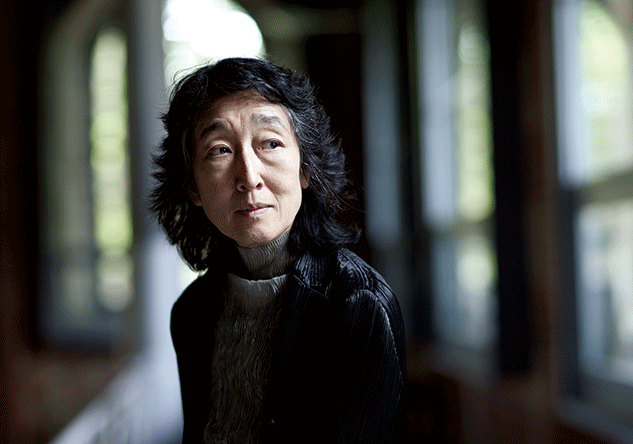Uchida opens Schubert series in mesmerizing fashion

Mitsuko Uchida opened her Schubert sonata series Monday night at Carnegie Hall.
On Monday night, Mitsuko Uchida went to the piano and meditated for a while on music by Schubert. A couple thousand people sitting in Carnegie Hall were lucky enough to listen in.
Attending an Uchida performance can feel like eavesdropping on an intimate and meaningful conversation. Monday’s recital—the first of four devoted to Schubert’s piano sonatas (two this season and two in 2019)—showed once again that there is hardly a more unshowy pianist anywhere, nor one with more to show in terms of touch, color, and imagination.
Contributing to the illusion that no one was listening was the liberty the pianist gave herself to observe the conventional order of things or to float free of it—beginning with the choice to start her long Schubert journey with a piece near the end of it, chronologically speaking: the Sonata in C minor, D. 958, composed just weeks before Schubert’s death at age 31.
It is a work that seemed to epitomize Schubert traits that will be on view for the entire series: the stark contrast of craggy chords with subtly voiced lyricism, the leisure to follow ideas wherever they led, and the athletic delight in scales that, as one of the composer’s friends observed, “seemed to run around the keyboard like mice.”
Uchida’s marvelous range of touch gave those mice sharp claws in some passages and velvet slippers in others. In their forceful way, the craggy chords were as artfully voiced as the songlike moments that followed. And the leisurely excursions, stretched still further by the pianist’s expressive rubato, never lost a sense of direction.
The sonata’s other pleasures included a vast, eventful Adagio in the heart-on-sleeve manner of the young Beethoven, a capricious Menuetto with an enigmatic trio, and a spirited finale with hand-crossing “special effects.” The finale’s whirring triplets and persistently skipping theme could have been a recipe for monotony, but under Uchida’s fingers the theme took many delightful shapes, and those triplets could sound like a storm, a fog, or a crackling fire.
If rubato was a feature of the C minor Sonata, it was the raison d’être in Uchida’s performance of the earlier Sonata in A major, D. 664. Thought to date from the same idyllic summer vacation that produced the “Trout” Quintet, the sonata begins with a distinctly “liberated” rendition of the sonata’s simple opening tune; it seemed as though all the musical rules had been relaxed, even the ones about playing in correct time. One could tut-tut about it, or go with the pianist’s impulses.
The fetching, mellow sound world that Uchida created for this sonata invited the latter response. By the Andante, the pianist’s subjective treatment of the simple theme and its elaborations came as no surprise. Neither did the willful finale, in which pearly scales zipped this way and that, untethered to rhythmic niceties. It was the kind of playing that no conservatory jury would give a passing grade, but that earned an ovation from the enchanted Carnegie audience.
One might expect a similar approach to the Sonata in G major, D. 894, whose style was unconventional enough for Schubert’s publisher to change its title to “Fantasy.” (It’s also true that, by 1826, pieces with that title sold better than sonatas.) On Monday, however, Uchida affirmed the leisurely first movement’s essential “sonataness” in its rhetoric of proposition and response, and the architecture of exposition, development and return—even while opening the windows and letting in all that fragrant Schubertian air. This composer’s “heavenly length” never felt more engaging.
The Andante’s simple theme sang out over glowing inner voices, while the minor-key episode was compounded of fiery and gentle legato elements, contrasts within a contrast. Similarly, flexible rhythms and shifting tone colors gave shape and depth to the forceful Menuetto.
The little chatter of repeated chords that punctuated the finale’s opening theme seemed to become a theme in its own right as this musing Allegretto gradually unfolded. No allusion to that motive and no change in harmonic color went unobserved in Uchida’s engrossing performance. The movement’s many pages seemed to fly by, and one felt not relief but a touch of regret as the little chord-motive gently took its leave at the end.
Of course the delighted audience demanded an encore; Uchida obliged by following the composer of heavenly length with an item of heavenly brevity, Schoenberg’s one-minute, evanescent Piano Piece, Op. 19, No. 2.
Mitsuko Uchida’s Schubert recital series at Carnegie Hall continues with the sonatas D. 575, 845, and 850, 8 p.m. Friday. carnegiehall.org; 212-247-7800.





